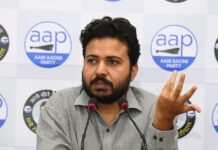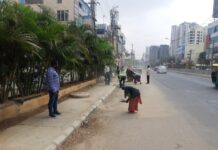New Delhi, From double-decker buses for interstate transport to a catamaran which will ferry people over the Yamuna from Delhi to the City of Taj, Agra — Union Minister for Road Transport and Highways Nitin Gadkari is eyeing a revolution in public transport in the coming years, which, he said, will be easy on the pockets of common man as well as safe for the environment.
Addressing a gathering, Gadkari said he has a plan to start double-decker buses between cities like Delhi and Jaipur, Delhi and Chandigarh, and Mumbai and Pune, which will give “tea and breakfast like private airlines”.
“My vision is to start double-decker buses between cities like Delhi and Jaipur… so that people don’t have to drive cars. This will cause less pollution. I will ask states to implement this service. This will bring cleanliness, comfort to passengers and will generate employment,” he said during the launch of the ‘Ease of Moving Index’ prepared by Ola.
The Minister also spoke of a Russian catamaran he is trying to get which will transport people from Delhi to Taj Mahal.
“I am also trying, but don’t take it as my commitment, to start a catamaran service between Delhi and Agra before January 26. I am trying to get this 60-seater catamaran, which will run at a speed of 80 km per hour. It runs on water and also on sand. Imagine what a revolution this would be,” he said.
The ‘Mobility Index’, which Gadkari released today, was based on a survey of 43,000 respondents from 20 cities. The Index claimed that over 80 per cent of the respondents believe that urban transport has improved over the last five years and nearly as many believed that by 2030 electric vehicles could replace conventional ones.
The report quantified the responses on five parameters: scale, character, culture, economy and geography.
“This report has important information that can help public stakeholders, city administrators and city planners in making smarter decisions to address pollution, congestion, and safety, and in building dynamic solutions to improve mobility for citizens at large,” Gadkari said.









